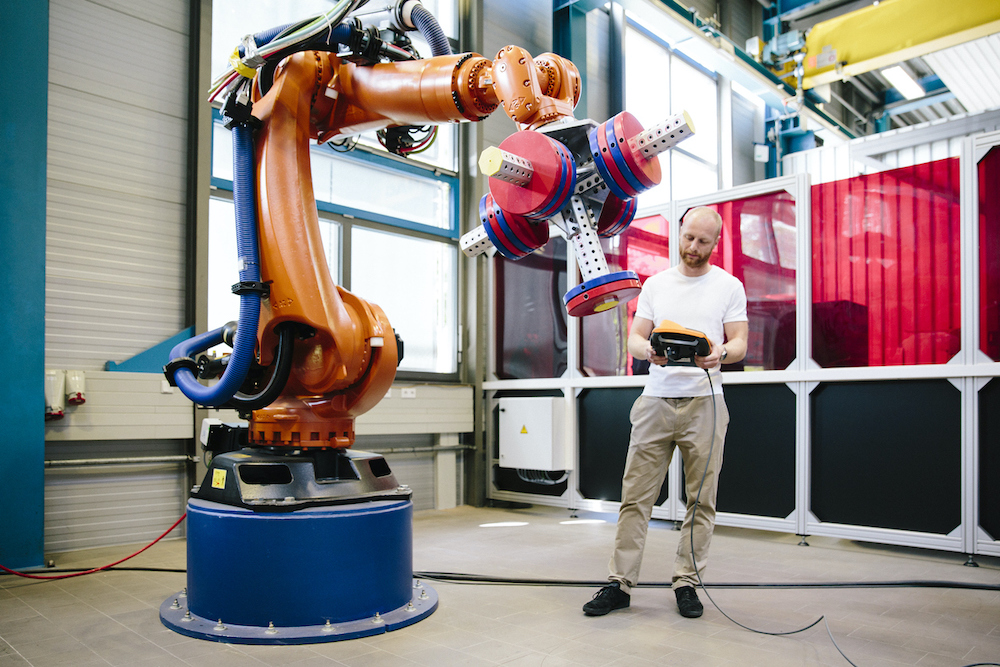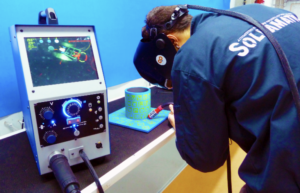Industry 4.0, as well as concepts such as the smart factory and digital transformation, present myriad opportunities for welders and fabricators.
Industry 4.0 encompasses the rapid technological change that is disrupting businesses across all industries. Advances in communication technologies, devices connected to the internet and data analytics are occurring at a much faster pace than at any other time in history. With the proliferation of smart sensors and the resultant data, welders and fabricators are now able to access insights that have helped to optimise operations and improve efficiencies.
Improvements in Efficiency and Productivity
Industry 4.0 and advanced welding technology is already helping welders and fabricators improve their efficiency and productivity. More and more, to ensure their global competitiveness, businesses are investigating ways to save money and reduce their overheads. The best way to do so is by undertaking operational efficiency improvements that help reduce or eliminate redundancies, errors, bottlenecks and waste.
Welding 4.0 and advanced welding technology play an essential role in creating lean manufacturing processes. The right type of technology can help eliminate workflow delays and duplications and accelerate entire processes through the automation of individual tasks.
Superior Quality and Repeatability
Industry 4.0 production processes are proven to deliver superior quality outcomes and higher repeatability. Any process that improves weld quality and repeatability is worthwhile. Welding is not just a commodity, or a simple, straightforward process. When welds fail, the results can be disastrous. A poor quality weld can be hugely expensive, and can cause massive damage, injuries, and even fatalities.
Bolstered Competitiveness
Industry 4.0 has the potential to enhance the economic competitiveness of Australia’s welding fabrication sector. The adoption of Industry 4.0 methods in welding helps to offset costs associated with labour, inspection and rework, placing fabricators in a better position to bid, and deliver on, projects. With access to detailed data on factors such as production, planning, quality management, welders can deliver more accurate costing information and have greater confidence in their ability to comply with strict International and Australian Standards.
Better Conditions for Welders
Technological innovations allow businesses to make better use of human skill and innovation, with machines taking over mundane tasks so that employees can focus on critical thinking, quality and creativity. This opens up new opportunities for businesses to improve and optimise their operations.
It can also result in other, more indirect, payoffs. For instance, using a plasma welding machine or a Microsoft HoloLens, or programming a robot, can be more interesting than traditional MIG or TIG welding. Several Weld Australia members that have invested in advanced technology have reported marked improvements in recruiting, training and retaining staff long-term as a direct result.
In addition, advanced technology is helping to make welding a far safer profession. For instance, the use of robots and co-bots (particularly in confined spaces) helps to remove welders from immediate exposure to welding fumes, ultraviolent radiation, heat and sparks.
With advancements in robotics technology, and the likelihood of increased industry uptake, the issue of welder employment rates is inevitably raised. Media frequently reports that the more robots we use, the less jobs there are available. This is rubbish. Robots automate processes, making these processes more efficient, thereby generating even more work.


 Advanced technology is even having an impact on welder training. Increasingly, old-school training techniques are being complemented by innovative teaching methods that rely on augmented and virtual reality systems. Augmented and virtual reality training systems are student-focused, allowing individual students to progress at their own pace.
Advanced technology is even having an impact on welder training. Increasingly, old-school training techniques are being complemented by innovative teaching methods that rely on augmented and virtual reality systems. Augmented and virtual reality training systems are student-focused, allowing individual students to progress at their own pace.